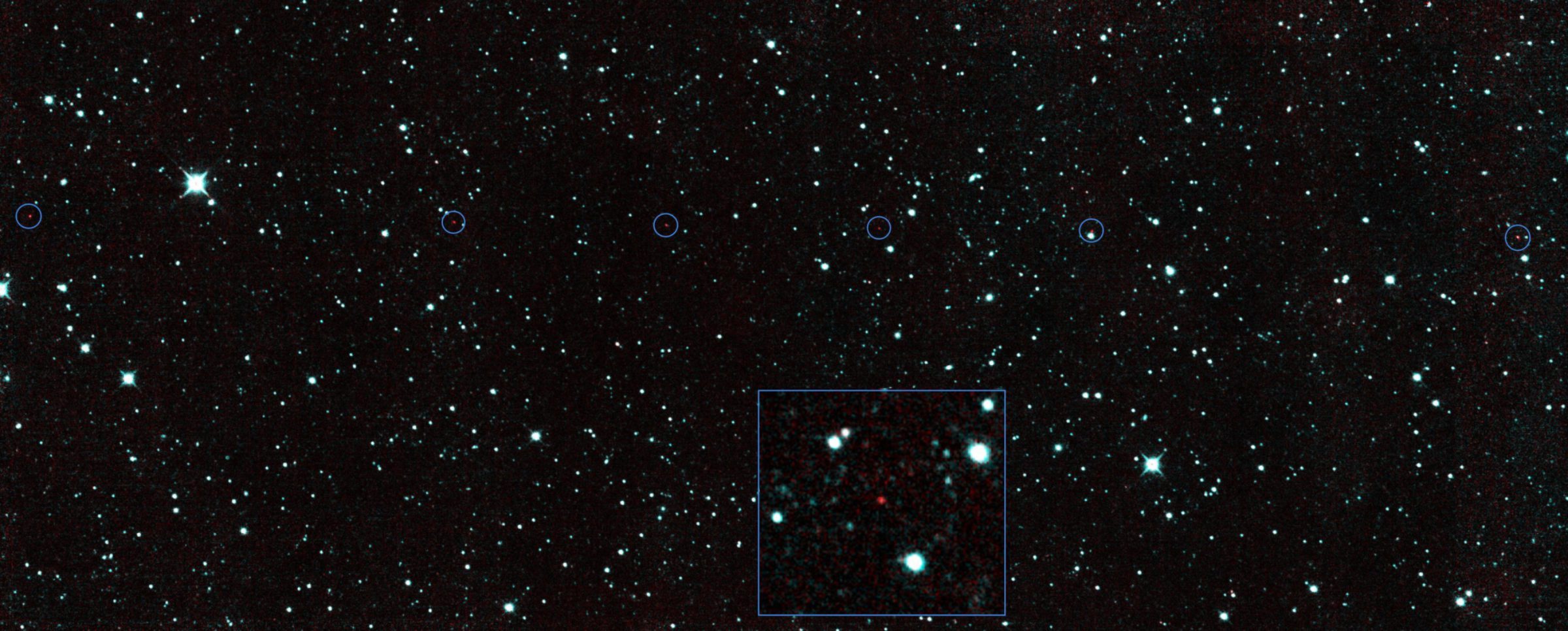Bruce Murray Space Image Library
WISE spacecraft's first asteroid discovery after 2013 reactivation

The six red dots in this composite picture indicate the location of the first new near-Earth asteroid seen by NASA's Near-Earth Object Wide-field Infrared Survey Explorer (NEOWISE) since the spacecraft came out of hibernation in December 2013. The asteroid, called 2013 YP139, is the first of hundreds of space-rock discoveries expected during its renewed mission. The inset shows a zoomed-in view of one of the detections of 2013 YP139.
2013 YP139 was discovered by NEOWISE on Dec. 29, 2013. The mission's sophisticated software picked out the moving object against a background of stationary stars.
Near-Earth objects are asteroids and comets with orbits that come close to Earth's path around the sun. 2013 YP139, is currently about 27 million miles (43 million kilometers) from Earth. Based on its infrared brightness, scientists estimate it to be approximately 0.4 miles (650 meters) in diameter and extremely dark. Because NEOWISE is an infrared telescope, it senses heat from asteroids. 2013 YP139 is as dark as a piece of coal, and it glows brightly at infrared wavelengths. The shortest infrared wavelength, 3.4 microns, is color-coded blue, and the longer wavelength, 4.6 microns, is color-coded red. The asteroid appears as a string of red dots because it is much cooler than the stars. Stars are thousands of degrees, but the asteroid is close to room temperature, so it is red in these images.
While asteroid 2013 YP139 orbits the sun in an elliptical orbit nearly in the plane of our solar system and is classified as a potentially hazardous asteroid, it is not likely to approach within Earth's vicinity anytime over the next 100 years. However, the asteroid's future motion can bring it within about 300,000 miles (490,000 kilometers) of Earth's orbit, so its long-term motion will be closely monitored.
The image is about 1.5 degrees across. Asteroid 2013 YP139 was traveling across the sky at about 3.2 degrees per day when these images were taken. For reference, the full moon is about 0.5 degree across.


 Explore Worlds
Explore Worlds Find Life
Find Life Defend Earth
Defend Earth

